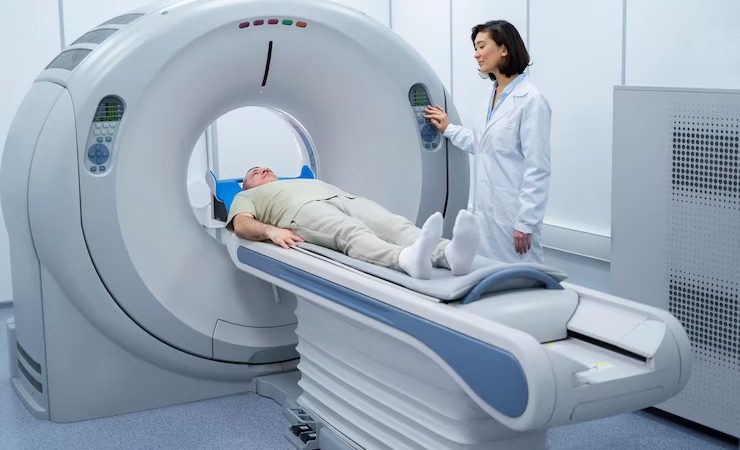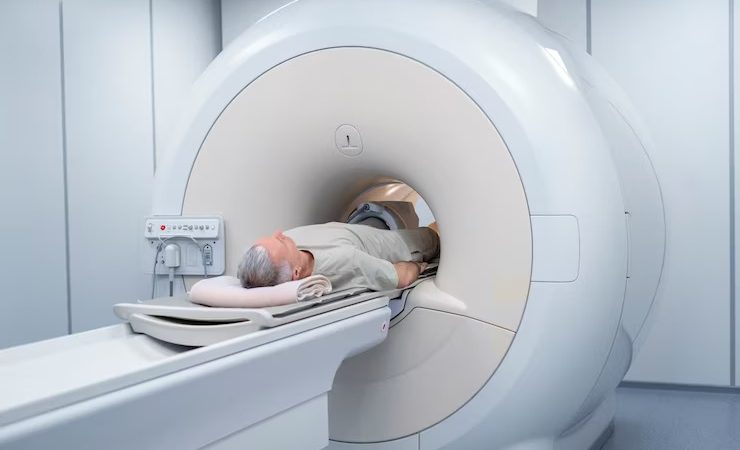What do you mean by a mammogram?

What is a mammogram (Mammography)?
A mammogram is an X-ray assessment of the breasts. It is used to diagnose and analyze breast cancer in women who already have breast-related issues such as a bump, pain in the breasts or areola release as well as for regular check-up among those women who have no breast grievances. This diagnostic method is excellent at diagnosing breast malignancies, tumours and any such growth well in advance before they can be identified by palpation (contact).
While a mammogram cannot demonstrate that a strange lesion is cancer, in the event that it raises a critical doubt of malignant growth, the tissue can be taken out for biopsy via stereotactic biopsy. It is a painless procedure in which the tissue is taken out via needle and inspected under a magnifying lens to see whether the lesion is a malignant growth or not.
Mammography has been around for the last 30 years, and in the last 15 years, specialized headways have significantly resulted in better procedures and results.
Types of mammograms (Mammography)
There are two types of mammograms:
- Screening mammogram: The women who do not show any signs or symptoms of breast cancer undergo this type of X-ray. In this type of screening, two X-rays are taken of each breast in order to determine the presence of cancer. This type of mammogram is beneficial for determining tumours that cannot be normally perceived.
- Diagnostic mammogram: This is done to distinguish any incredulous changes happening in the breasts, for example, breast torment, irregularities, strange skin tone, release from the areolas, the irregular shape of the breasts, nipple thickening, and so on. Diagnostic mammogram provides additional mammogram pictures.
Risk factors of mammograms (Mammography)
Age-related issues: More tendons and glands are present in the breasts of young women as compared to older women. Hence, it is hard to identify the carcinogenic development in younger women due to the presence of thick tissues in comparison to older women who have lesser glands and tissues with more amount of fat.
Unable to detect all cancers: In mammography screening, not every breast disease can be identified and an actual assessment may be needed by the doctor to make a reasonable analysis. This can occur especially in situations, where the malignant development is too little or in a place which is hard to see through a mammogram, for example: the armpits.
Extra testing required: Roughly, 10% of the women going through a mammogram, may need to go for an extra test. This extra procedure might incorporate biopsy (taking an example of the breast), ultrasound or MRI. Additionally, a large portion of the interpretations made via a mammogram may not be malignant. Now and again, the new mammograms should be contrasted with a past mammogram to reach at a conclusion.
Not always accurate: The precision of mammogram relies on a number of conditions, including expertise of the radiologist performing it and, on the procedure, used. Mammogram, may at times, give bogus positive or adverse outcomes, which might occur due to variables like age and/or thickness of the breast.
Exposure to radiation: Even though the propensity of radiation is low, a fraction of women may be at a more serious danger of radiation-based perils.
Before the procedure: When a woman undergoes this type of screening, she is advised to wear a lead apron in order to prevent any kind of problem.
Why is Mammography (mammogram) done?
Mammogram might be used either for screening or to make a finding. Women more than 30 years of age, ought to get their mammogram done in the event that they have side effects, such as an unmistakable bump, breast skin thickening, areola release or withdrawal, erosive sore of the areola or breast torment.
A mammogram might be used to assess the breasts when actual assessment and history are not decisive. Females with breast which are thick, “uneven,” as well as big might be screened with a mammogram, as the actual assessment might be hard to perform.
Females who are at high danger of breast malignancy or a genetic background of breast disease might be regularly screened with a mammogram.
There might be other purposes as well for which your specialist might suggest a mammography.
How to prepare for the mammogram (Mammography) procedure?
- If you are pregnant, inform your doctor before the procedure.
- Do not use any moisturizers, powder, deodorant, etc. on your breasts and armpits.
- If you are on any mediation, inform your specialist beforehand. Also, take your previous mammogram reports with you, if there are any.
- You are advised to remove all jewellery before the process. and change into a gown accordingly.

What happens during the mammograms (Mammography) procedure?
Each breast fits onto a level X-ray plate. A compressor will then at that point push the breast down to straighten the tissue. This gives a clearer image of the breast. You may need to pause your breathing for each image. You might feel a modest quantity of pressing factor or uneasiness but it is short, hence you needn’t worry.
During the diagnostic test, your primary care physician will analyze the mammogram. They might arrange extra pictures as well to show various perspectives, in case something is hazy or needs further analyzation. This happens most of the time and is viewed normal.
Final steps
Women might be requested to wait until the clarity of mammogram which is checked by the technician. The complete system typically takes less than 30 minutes to complete. After the process, the woman might feel some soreness and discolouration inside the breasts because of the compression all through the technique. Thereafter, the mammogram is sent to the medical doctor for interpretation and dialogue with the patient. After this, the woman can go home and resume her daily activities.
These procedures can be complex and, thus, it becomes important to have an experienced specialist by your side. At Yashoda, we try to assist you in every way possible. In case you have more queries or concerns, you can book an appointment at Yashoda Superspeciality Hospital & Cancer Institute, Sanjay Nagar, Ghaziabad.
What is the cost of mammogram or mammography in Delhi NCR & Ghaziabad?
Mammogram or Mammography test cost in Delhi NCR depends on the type of test being performed. A regular breast scan price can be between Rs. 1,500 and Rs. 2,000, whereas as a digital mammogram can cost up to Rs. 8,000. Regardless of mammogram cost, you should get your breasts checked regularly.




